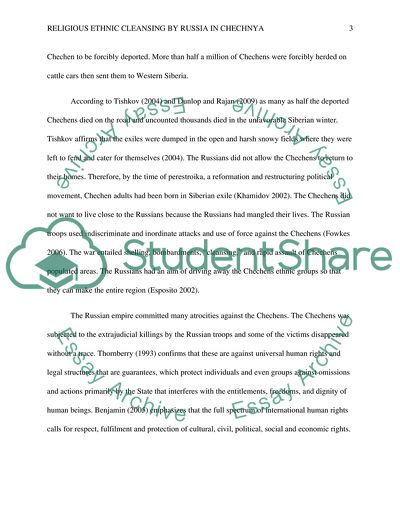Cite this document
(Religious Ethnic Cleansing by Russia in Chechnya Essay Example | Topics and Well Written Essays - 2250 words, n.d.)
Religious Ethnic Cleansing by Russia in Chechnya Essay Example | Topics and Well Written Essays - 2250 words. https://studentshare.org/religion-and-theology/1818804-religious-ethnic-cleansing-by-russia-in-chechnya
Religious Ethnic Cleansing by Russia in Chechnya Essay Example | Topics and Well Written Essays - 2250 words. https://studentshare.org/religion-and-theology/1818804-religious-ethnic-cleansing-by-russia-in-chechnya
(Religious Ethnic Cleansing by Russia in Chechnya Essay Example | Topics and Well Written Essays - 2250 Words)
Religious Ethnic Cleansing by Russia in Chechnya Essay Example | Topics and Well Written Essays - 2250 Words. https://studentshare.org/religion-and-theology/1818804-religious-ethnic-cleansing-by-russia-in-chechnya.
Religious Ethnic Cleansing by Russia in Chechnya Essay Example | Topics and Well Written Essays - 2250 Words. https://studentshare.org/religion-and-theology/1818804-religious-ethnic-cleansing-by-russia-in-chechnya.
“Religious Ethnic Cleansing by Russia in Chechnya Essay Example | Topics and Well Written Essays - 2250 Words”. https://studentshare.org/religion-and-theology/1818804-religious-ethnic-cleansing-by-russia-in-chechnya.


